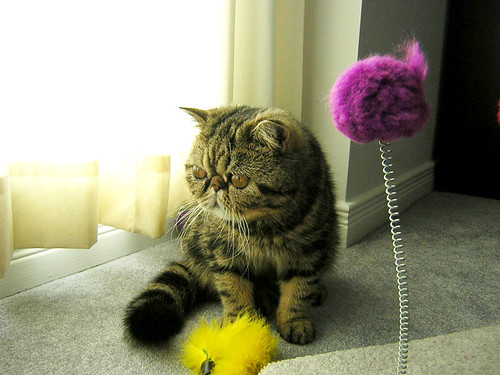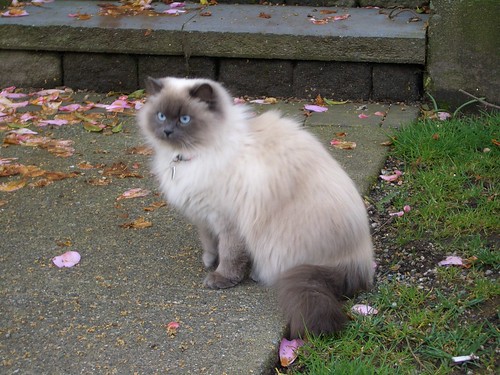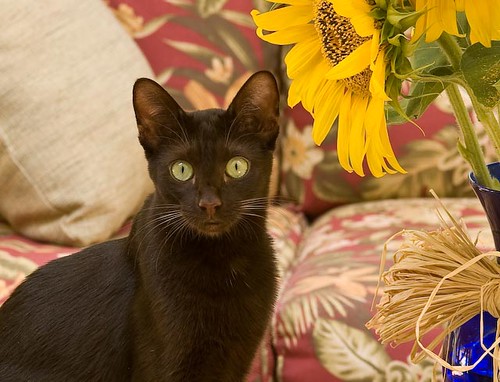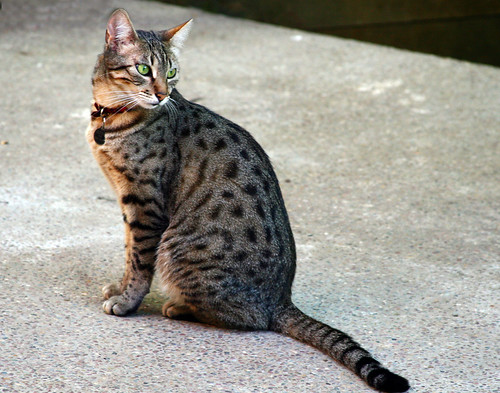 Exotic Shorthair by Charlyn W
Exotic Shorthair by Charlyn WBreeders crossed the American Shorthair with the Persian in the United States around 1960. Thus were born shorthaired Persians, called Exotic Shorthairs and recognized by the C.F.A in 1966. During the breeding program, crosses were also made with the Russian Blue and the Burmese.
Since 1987, the only allowable outcross breed is the Persian. The F.I.Fe. recognized the Exotic Shorthair in 1986. They have nearly the same body as the Persian, but a thick, dense short coat. They appeal to people who like the personality of a Persian but do not want the hassle of grooming a long-haired cat. They are also known as "The Lazy Man's Persian."
Description
Head: Round, massive. Very broad skull. Rounded forehead. Round, full cheeks. Short, broad, round muzzle. Short, broad nose with pronounced stop. Strong chin. Broad, powerful jaws.
Ears: Small, rounded at the tip, not too open at the base. Widely spaced and well-furnished with hair on the inside.
Eyes: Large, round, well-spaced. Pure, deep color corresponding to that of the coat (gold to copper in most varieties; green in the chinchilla and the golden; blue in the white and the colorpoint).
Neck: Short and thick.
Body: Medium in size, cobby, low to the ground. Broad chest. Massive shoulders. Large-boned, powerful muscles. Weight: 3,5 - 6 kilogram.
Paw: Short, straight, and large. Round, large paws. Tufts of hair between the toes are desirable.
Tail: Short, thick, carried low. Rounded tip.
Coat: Shorthaired but slightly longer than that of other shorthaired breeds. Dense, fluffy, erect hair. All Persian colors are recognized.
The Exotic Shorthair has a gentle and calm personality reminiscent of the Persian, but it is livelier than his longhaired ancestor. Curious and playful, it is friendly to other cats and dogs. It rarely meows. It doesn’t like being left alone, and needs the presence of its owner (or of voices or smells reminiscent of its master-such as a radio kept on).
They tend to show more affection and loyalty than most breeds and make excellent lap cats. Their calm and steady nature makes them ideal apartment cats for city dwellers. Nonetheless, Exotics retain some of the energetic spark of their American Shorthair forebears and they are often capable mouse hunters.





